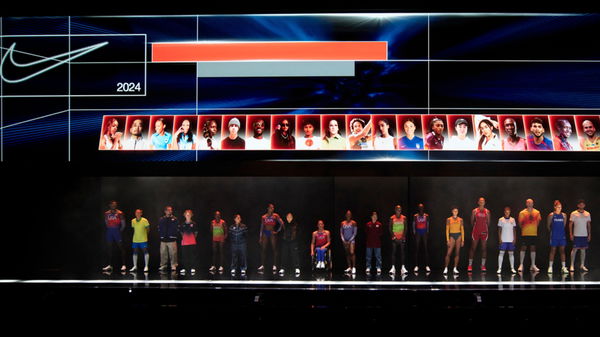

Among the brands vying for attention during the Paris Olympics is Nike, which has made waves with its designs. Responsible for the outfits of several national teams, including the much-discussed Team USA track and field uniforms, Nike found itself at the center of controversy as many expressed dissatisfaction with the designs. Critics pointed out that the women’s leotards were impractical and uncomfortable, while the designs lacked creativity overall.
However, this drama isn’t Nike’s first time courting controversy ahead of an Olympic Games. A look back at the brand’s forbidden ambush plan against arch-rival Adidas during the 2012 London Olympics reveals a history of strategic marketing that still echoes today.
ADVERTISEMENT
Article continues below this ad
How Nike challenged its arch-rival Adidas during the 2012 London Olympics
In a post on Instagram by an account called “lnterestingasf*ck,” the page shared an ad from Nike during the 2012 Olympics. That year, when Adidas secured the exclusive sponsorship contract for the London Olympics, it prohibited other sportswear brands from using Olympic athletes in their advertising campaigns. Nike was thus faced with a significant challenge in marketing. However, instead of giving up, they chose a truly innovative approach.
View this post on Instagram
The brand decided to showcase how greatness comes from ordinary people. One such ad features Nathan Sorrell, an overweight 12-year-old boy. The video posted on Instagram presented the young boy running along a deserted path, accompanied by a voiceover declaring, “Greatness is not some rare DNA strand. It’s not some precious thing. Greatness is no more unique to us than breathing. We are all capable of it. All of us.”
Nathan’s role in the ad resonated with fans by showing that greatness isn’t just for elite icons but is found in the ordinary and in those who overcome their limits and personal challenges. This strategy used by Nike not only allowed them to bypass Adidas’ restrictions but also left a lasting message of personal achievement. Let’s take a look at how this ambush strategy was planned and executed and how it wasn’t Nike’s first time.
ADVERTISEMENT
Article continues below this ad
The 2012 planned ambush strategy executed by the brand
In 2012, Nike made headlines when it became the first UK company to have a Twitter campaign banned by the advertising watchdog. Their “Make It Count” campaign, which included tweets from football stars Wayne Rooney and Jack Wilshere, fell afoul of the Advertising Standards Authority (ASA) for not indicating that the tweets were ads. Undeterred, during the same year’s London Olympics, Nike launched a global TV campaign called “Find Your Greatness.”
Despite not being an official sponsor of the Olympics, Nike aimed to capitalize on the Olympic hype and outdo their rival Adidas. The campaign cleverly featured ordinary people participating in sports in various locations named London around the world. By avoiding explicit mentions of the London Games, athletes, or Olympic imagery, Nike managed to bypass strict rules on ambush marketing.
ADVERTISEMENT
Article continues below this ad
A representative from Nike UK stated that the commercial had been carefully reviewed and approved by Clearcast, the organization responsible for checking TV advertisements to ensure they comply with advertising codes enforced by the Advertising Standards Authority. Nike’s history of gatecrashing major sporting events with ambush marketing was well-established.
In 2008, Nike ran a campaign that coincided with the Olympic handover from Beijing to London, featuring aspiring 2012 Olympians. Even in 2010, they ambushed official World Cup sponsors with an ad featuring football phenoms like Wayne Rooney and Cristiano Ronaldo. Even Nike’s use of Africa’s largest digital advertising screen in Johannesburg to display fan messages over Twitter and feature its football stars showcased their knack for creative and attention-grabbing marketing strategies. Ahead of the Paris Olympics in 2024, what are your thoughts about Nike’s innovative tactics? Comment below!
ADVERTISEMENT
ADVERTISEMENT
ADVERTISEMENT




